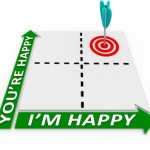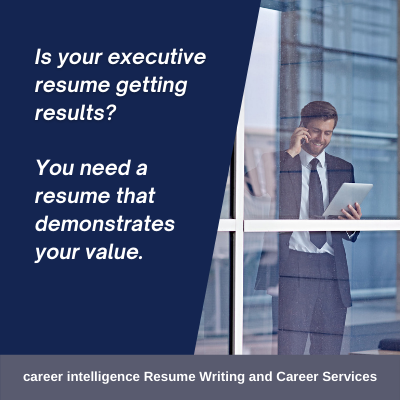
Widgetized Section
Go to Admin » Appearance » Widgets » and move Gabfire Widget: Social into that MastheadOverlay zone
Interview Attire Basics
Do’s and don’ts of dressing for a job interview
 If you’ve played your cards right and landed a job interview, you don’t want to blow it by wearing the wrong interview outfit. While the concept of “wrong” may be subjective when it comes to other fashion choices, interview dressing has a fairly set protocol. Deviating too far outside the norm for this important meeting may result in failing to get the job.
If you’ve played your cards right and landed a job interview, you don’t want to blow it by wearing the wrong interview outfit. While the concept of “wrong” may be subjective when it comes to other fashion choices, interview dressing has a fairly set protocol. Deviating too far outside the norm for this important meeting may result in failing to get the job.
You might think that if you have the right skills and you’re the best person for the job, you should be chosen hands down regardless of your wardrobe. While this may be true in theory, research shows that first impressions related to your appearance make a big difference in job interview situations. Frank Berniari, PhD, of Oregon State University found in a study that your interviewer decides whether you’re the right fit for the job within the first ten seconds of meeting you. The way that you’re dressed has a lot to do with the outcome of that “meet-and-greet” evaluation. In short, the study found that if you look professionally polished, you’re more likely to get hired than if you appear to have put less effort into your look.
And while you may wonder whether you can err on the side of more casual in industries known for their “jeans” culture such as tech, beware of extending this liberty to your job interview. A survey conducted by Robert Half Technology found that 33% of C-level execs felt that job applicants should wear formal business attire even when interviewing for a behind-the-scenes IT job.
To help ensure that you make the right clothing choices on interview day, career-intelligence spoke with etiquette expert Diane Gottsman of The Protocol School of Texas for her list of do’s and don’ts for both women and men.
Interview Attire for Women
Yes, there’s more to interview dressing than just “wearing a business suit”—particularly for women. Gottsman suggests several details that make a difference when it comes to women’s basic interview attire, depending on what type of company you’re meeting with.
Conservative company. For more conservative industries like finance, law, or pharmaceuticals, Gottsman favors the classic dark, two-piece skirt suit in gray, navy, or black. You can complement this with a light-colored blouse; a white tailored shirt is an executive staple. Pastel colors are also professional and easy to coordinate with your interview outfit. Another option is a dark-colored pantsuit with matching jacket and pants. “Your selection of attire will be viewed as a confident choice and you will appear serious about getting the job,” says Gottsman.
Don’t:
Make fashion choices that appear too trendy, flashy, or sporty. When in doubt, ask your recruiter for suggestions or advice about whether the company’s culture is considered conservative.
Avoid panty hose. If you’re not sure of the corporate dress policy, it’s smart to err on the side of hosiery. “While some young women see hosiery as old-fashioned, panty hose have made great strides and are much more comfortable and fashionable than in years past,” says Gottsman. “Select a sheer or nude and avoid textured, patterned, or colored hosiery.”
Wear a short skirt or form-fitting garments. Tight clothing and cleavage are definite interview no-no’s, as is flashy jewelry. Personal style should be kept to a minimum, particularly when interviewing with a conservative company.
Casual company. Certain industries like advertising, public relations, and in some cases management consulting are known for having a more casual work environment. While as mentioned above you don’t want to take this too literally at the interview stage, Gottsman gives a green light for choosing in select cases to tailor down slightly without looking too casual. Tailored slacks and a blouse, or a skirt and a blouse with a complementary jacket or sweater, are appropriate options. “The key is to think in terms of ‘three pieces,’ and it’s always better to be overdressed than underdressed,” says Gottsman.
Don’t:
Wear open-toed shoes. Regardless of the current shoe trends, a shoe worn during a job interview should be professional and understated—no scuffed heels, no unpolished shoes. Gottsman advises choosing a closed-toe, conservative pump. “The exception is when you are applying for a creative position or a position in the fashion industry and your appearance must reflect the current fashion,” adds Gottsman.
Wear jeans, t-shirts, or sneakers. No matter how laid-back the work environment is or how underdressed your interviewer might be, it’s never appropriate to take this approach to your interview attire.
Use a book bag rather than a briefcase. This is a mistake many college grads make—stay professional even at the accessories level. A purse is acceptable along with a leather portfolio, but keep it small and simple. Better yet, carry only a briefcase and put your wallet inside.
Interview Attire for Men
While men may seem to have it somewhat easier in the dressing department, there are still some definite do’s and don’ts for interview success. While a suit is the classic standard, a stark black suit is not flattering on all men and skin types, according to Gottsman.
She recommends a dark, two-piece suit for men in gray, navy, or black when interviewing with a conservative company. She adds that a crisp white cotton shirt is the most powerful color and makes a confident, powerful statement when paired with a conservative tie.
What about when the job is extremely casual and you’re told, “Don’t wear a suit”? Gottsman still recommends wearing a sport jacket and trouser as a relaxed alternative to the classic suit, even for more casual companies. “A good rule of thumb is to be overdressed rather than underdressed,” says Gottsman. “Do some research before the interview to feel most comfortable with your decision.”
Here are some additional do’s and don’ts for men’s basic interview wardrobe:
Do:
- Wear a leather belt with a conservative buckle
- Choose a black or cordovan shoe—cleaned and polished, preferably with laces
- Wear dark socks that match your slacks
- Carry a leather briefcase or portfolio for resumes and other documents
- Arrive well-groomed, with a clean-shaven face
- If it’s raining, choose a black or neutral color umbrella and trench coat
- If you wear a watch, make it a conservative style with a link or leather band (it’s often preferable to remove your watch before the interview, however, to avoid the temptation to glance at it)
Don’t:
- Wear casual shoes, including dock shoes (and of course sneakers)
- Wear jeans or t-shirts, no matter how casual the company
- Arrive with wet or over-gelled hair
- Use strong cologne or aftershave
- Wear excessive jewelry, such as multiple rings on the same hand or a large necklace
- Wear a rubber sports watch
- Carry a book bag or backpack rather than briefcase
If you’re the right person for the job, don’t lose your chance based on interview dressing faux pas. Make the extra effort to understand the type of company you’re working for, but remember that when in doubt, overdressed is best. You can’t go wrong with sophisticated and polished, which will communicate that you’re polite, respectful, and serious about the position and the company.






You must be logged in to post a comment Login